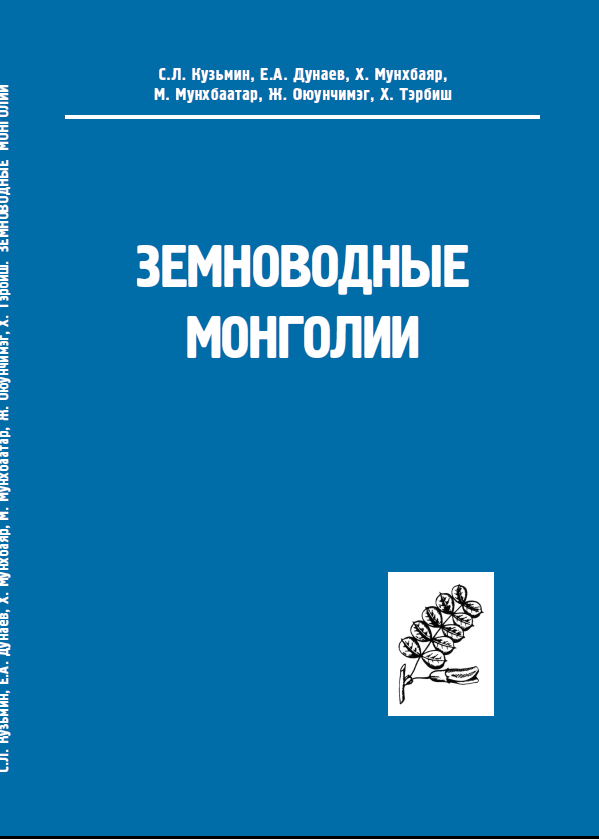|
Rana amurensis Boulenger, 1886
Siberian Wood Frog Subgenus: Rana | family: Ranidae genus: Rana |
 Sergius Kuzmin © PENSOFT Publishers (1 of 1)
|
|
|
|
Description Distribution and Habitat Country distribution from AmphibiaWeb's database: China, Kazakhstan, Korea, Democratic People's Republic of, Kyrgyzstan, Mongolia, Russian Federation
The southern margin of the range runs in Russia approximately along the line: Sverdlovsk Province (Turinsk Town) - northeast of Kurgan Province - south of Tyumen Province - Omsk Province - Novosibirsk Province - Gornyi Altai Republic (right bank of the lower Katun River, foothills of Altai Mountains: ca. 52ºN, 86ºE) - Kemerovo Province - Khakassia Republic - south of the Krasnoyarsk Region - southwest of Irkutsk Province - Republic of Buryatia, then to Mongolia (forest steppe and steppe zones: Kharkhorin Town - Tuul River - Kherleen River), China (Inner Mongolia Autonomous District, as well as Heilongjiang, Jilin, Liaoning and Shaanxi provinces) and Korea. Both the northern and southern margins of the distribution need further exploration. The rarity and sporadic distribution of the species in those areas provide obstacles for such exploration. Rana amurensis lives in coniferous, mixed, and deciduous forests, within which it penetrates the tundra and forest steppe zones. It occurs most frequently in open, wet places such as wet meadows, swamps, overgrown shores of lakes, riverbanks, and open areas in forests with abundant vegetation and arboreal debris. The connection with water bodies (overgrown river valleys with floodplain ponds and lakes) is especially typical in the southernmost (forest steppe and steppe) and the northernmost areas. In the south of the Primorye Region, this species avoids dense forests and occurs mainly in wet meadows with secondary small-leafed forest or shrub in river valleys. Reproduction occurs in shallow lakes, ponds, large puddles and swamps with stagnant water. Life History, Abundance, Activity, and Special Behaviors The larvae of R. amurensis consume mainly algae growing on underwater substrates (Phaeophyta, Zygnemales and Bacillariophyta), as well as higher plants, detritus and small aquatic invertebrates. Juveniles consume mainly terrestrial insects, but sometimes also aquatic arthropods. Adults consume mainly terrestrial invertebrates and the diet varies by season and habitat. The frog sometimes eats aquatic prey. The latter (Mollusca, Gerridae, Dytiscidae, Haliplidae and larval Odonata) are especially important in the northern part of the frog's range. Small amounts of aquatic organisms have been found in the stomachs of frogs caught at breeding ponds. Trends and Threats Relation to Humans Possible reasons for amphibian decline Drainage of habitat Comments
References
Bannikov, A. G., Darevsky, I. S. and Rustamov, A. K. (1971). Zemnovodnye i Presmykayushchienya SSSR [Amphibians and Reptiles of the USSR]. Izdatelistvo Misl, Moscow. Bannikov, A. G., Darevsky, I. S., Ishchenko, V. G., Rustamov, A. K., and Szczerbak, N. N. (1977). Opredelitel Zemnovodnykh i Presmykayushchikhsya Fauny SSSR [Guide to Amphibians and Reptiles of the USSR Fauna]. Prosveshchenie, Moscow. Borkin, L.J., Belimov, G.T. and Sedalishchev, V.T. (1981). ''On distribution of frogs of the genus Rana in Yakutia.'' Herpetological Investigations in Siberia and the Far East. Zoological Institute of the USSR, Leningrad. Fei, L. (1999). Atlas of Amphibians of China. Henan Publishing House of Science and Technology, Zhengzhou. Kuzmin, S. L. (1995). Die Amphibien Russlands und angrenzender Gebiete. Westarp Wissenschaften, Magdeburg. Kuzmin, S. L. (1999). The Amphibians of the Former Soviet Union. Pensoft, Sofia-Moscow. Nikolsky, A. M (1936). Fauna of Russia and Adjacent Countries: Amphibians (English translation of Nikolsky, 1918, Faune de la Russie et des Pays limitrophes. Amphibiens. Académie Russe des Sciences, Petrograd, USSR). Israel Program for Scientific Translations, Jerusalem. Terent'ev, P. V. and Chernov, S. A (1965). Key to Amphibians and Reptiles [of the USSR]. Israel Program for Scientific Translations, Jerusalem. Vorobyeva, E. I. and Darevsky, I. S. (eds.) (1988). Amphibians and Reptiles of Mongolian People's Republic: General Problems. Amphibians.. Moscow. Won, H.-K. (1971). Choson Ryangso Pyachyungryuchji [Amphibian and Reptilian Fauna of Korea]. Korean Academy of Sciences, Pyongyang. Ye, C., Fei, L., and Hu, S. Q. (1993). Rare and Economic Amphibians of China. Sichuan Publishing House of Science and Technology, Chengdu. Zhao, E. and Adler, K. (1993). Herpetology of China. Society for the Study of Amphibians and Reptiles, Oxford, Ohio. Zhao, E. and Zhao, H. (1994). Chinese Herpetological Literature: Catalogue and Indices. Chengdu University of Science and Technology, Chengdu. Originally submitted by: Sergius L. Kuzmin (first posted 1999-11-10) Edited by: Kellie Whittaker (2017-03-05) Species Account Citation: AmphibiaWeb 2017 Rana amurensis: Siberian Wood Frog <https://amphibiaweb.org/species/4977> University of California, Berkeley, CA, USA. Accessed May 28, 2025.
Feedback or comments about this page.
Citation: AmphibiaWeb. 2025. <https://amphibiaweb.org> University of California, Berkeley, CA, USA. Accessed 28 May 2025. AmphibiaWeb's policy on data use. |




 Map of Life
Map of Life Read more about The Amphibians of Mongolia by Kuzman 2017
Read more about The Amphibians of Mongolia by Kuzman 2017